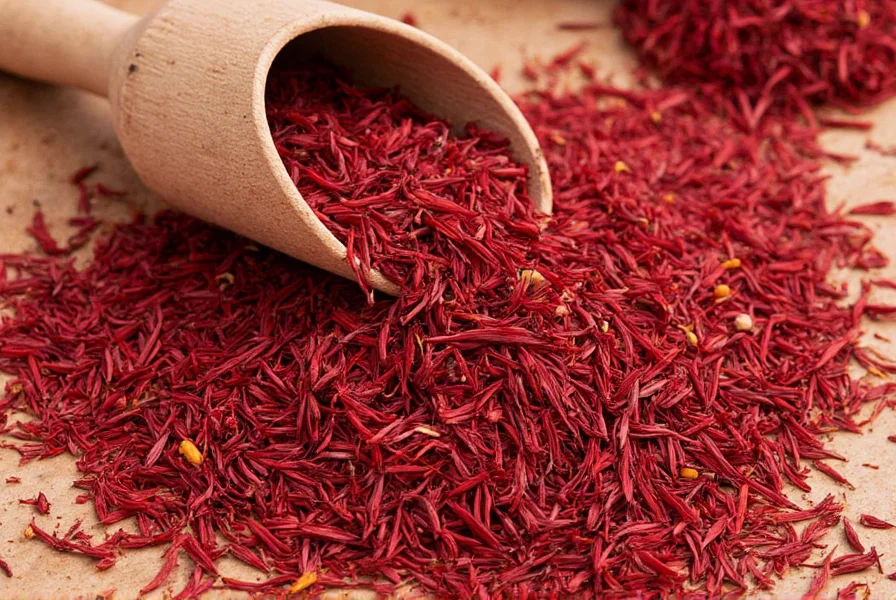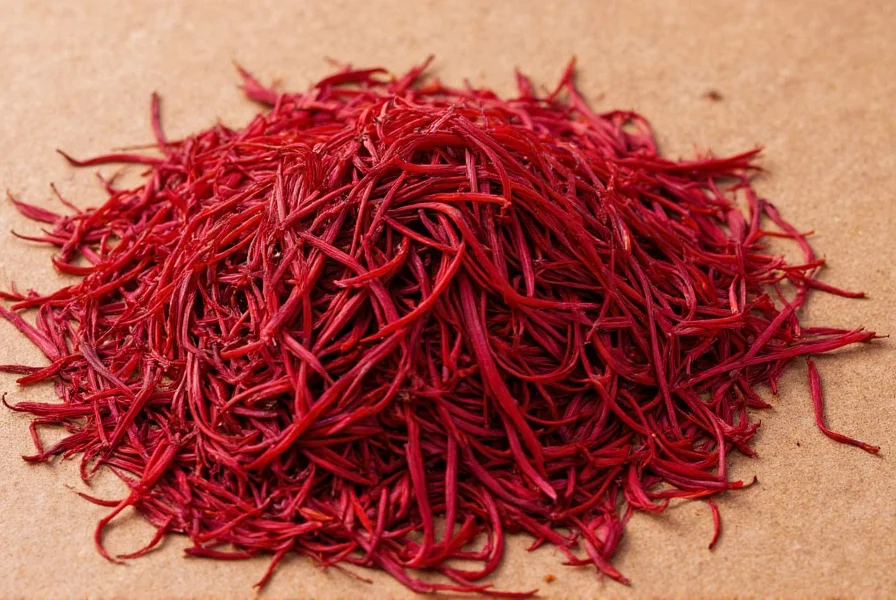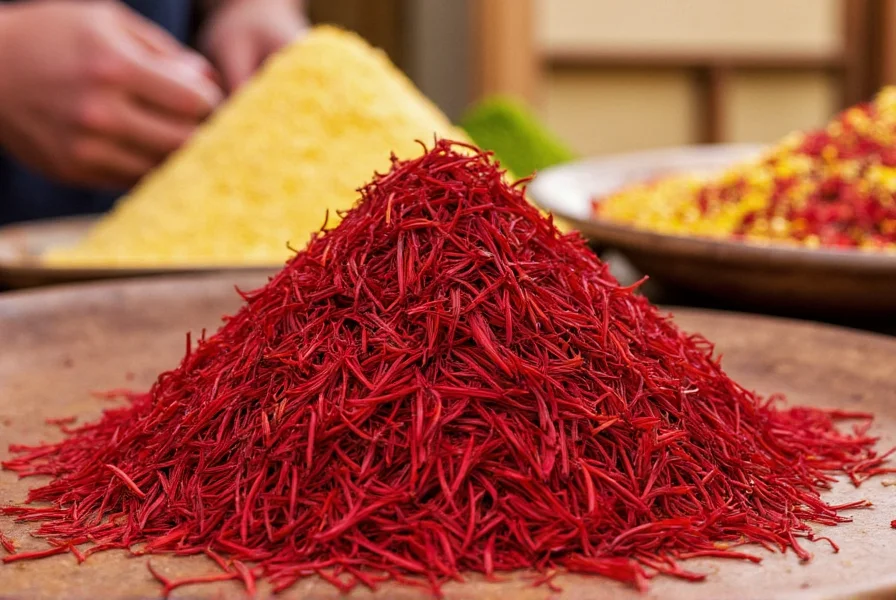As the world's most expensive spice by weight, saffron requires careful purchasing to avoid counterfeit products. Approximately 80% of saffron sold globally contains some level of adulteration, making source selection critical for both quality and value. This guide provides objective information about where to buy genuine saffron while helping you identify trustworthy vendors.
Understanding Saffron Quality Before You Buy
Saffron quality varies significantly based on origin, harvesting methods, and processing. The ISO 3632 standard classifies saffron into four quality categories (I, II, III, IV) based on crocin (color), picrocrocin (taste), and safranal (aroma) content. Category I represents the highest quality with the strongest coloring strength.
When searching for where to buy authentic saffron, remember that genuine saffron threads should:
- Appear deep red with orange tips (never uniformly red)
- Have a strong, distinctive aroma (not musty or stale)
- Release a rich golden-yellow color when steeped in warm liquid
- Cost $5-$20+ per gram (significantly cheaper options are likely adulterated)

Physical Retail Locations for Quality Saffron
For those preferring to inspect saffron before purchasing, several brick-and-mortar options exist:
Specialty Spice Shops
Dedicated spice retailers typically offer the highest quality saffron with knowledgeable staff who can verify origin and freshness. These establishments often source directly from producers and maintain proper storage conditions. When visiting where can I buy high quality saffron in person, ask about:
- Harvest date (saffron loses potency after 2 years)
- Country of origin (Iran produces 90% of world's saffron, followed by Spain and India)
- Whether they offer sample testing
High-End Grocery Stores
Stores like Whole Foods, Eataly, and Dean & DeLuca often carry premium saffron in small, properly packaged containers. While convenient, prices at these locations tend to be 20-30% higher than specialty spice shops for equivalent quality.
International Markets
Middle Eastern, Indian, and Spanish markets frequently stock saffron at more competitive prices. When shopping at where to buy saffron near me international markets, look for vendors who:
- Sell saffron in opaque containers (light degrades quality)
- Offer threads rather than powder (powder is easily adulterated)
- Allow you to smell and inspect the product before purchase
Online Retailers for Authentic Saffron
Purchasing saffron online requires more diligence but opens access to specialty producers worldwide. The best trusted saffron retailers online share these characteristics:
| Vendor Type | Advantages | Considerations |
|---|---|---|
| Specialty Spice Websites | Expert curation, quality guarantees, detailed origin information | Higher prices, limited selection |
| Direct-from-Producer Sites | Fresh harvests, traceable origin, competitive pricing | Shipping limitations, variable website quality |
| Major Online Marketplaces | Price competition, customer reviews | High risk of counterfeit products, inconsistent quality |
Identifying Reputable Online Sellers
When researching online saffron stores with good reputation, verify these elements:
- Transparency: Reputable sellers disclose country of origin, harvest year, and ISO classification
- Testing documentation: Third-party lab results verifying purity and strength
- Proper packaging: Opaque, airtight containers with desiccants to prevent moisture damage
- Real customer reviews: Look for detailed feedback about color strength and aroma

Avoiding Common Saffron Purchasing Mistakes
Even when you've found potential sources for where can you buy saffron, these pitfalls can compromise your purchase:
The Price Trap
Genuine saffron costs $500-$5,000 per pound depending on quality. If a vendor offers saffron significantly below this range, it's almost certainly adulterated. Common fillers include:
- Dyed corn silk or coconut fibers
- Meadow saffron (toxic)
- Artificially colored paper strands
Powder vs. Threads
Always purchase saffron in thread form rather than powder. Powder is nearly impossible to verify for authenticity and loses potency faster. If you need powder, purchase whole threads and grind them yourself as needed.
Storage Considerations
Even authentic saffron degrades quickly when improperly stored. When evaluating potential vendors, ask about their storage practices. Proper saffron storage requires:
- Air-tight containers
- Protection from light (dark glass or opaque containers)
- Cool temperatures (below 77°F/25°C)
- Low humidity environments
Regional Buying Guide
Availability of quality saffron varies by location. Here's what to know when searching for saffron shopping tips in different regions:
- United States: Look for Persian (Iranian) or Spanish saffron at specialty retailers. California produces small quantities of high-quality saffron during October-November harvest season.
- Europe: Spanish saffron (particularly La Mancha) is widely available, though often more expensive than Persian varieties of comparable quality.
- Middle East: Local markets offer fresh Persian saffron at competitive prices, but verify authenticity as tourist-targeted shops sometimes sell adulterated products.
- Asia: Indian and Kashmiri saffron commands premium prices but authentic varieties are difficult to verify outside specialty shops.
Verifying Your Saffron Purchase
After purchasing saffron, conduct these simple tests to verify authenticity:
- The Water Test: Place a few threads in warm water. Genuine saffron releases color gradually over 15-20 minutes, creating a rich golden-yellow hue. Fake saffron often dyes water immediately with an unnatural orange or red color.
- The Smell Test: Authentic saffron has a distinctive honey-like, floral aroma. Musty, metallic, or chemical odors indicate poor quality or adulteration.
- The Texture Test: Real saffron threads feel slightly moist and pliable. Extremely dry or brittle threads suggest age or improper storage.
For serious culinary applications or health purposes, consider sending samples to a laboratory for ISO 3632 testing to verify crocin, picrocrocin, and safranal levels.
Frequently Asked Questions
How can I tell if saffron is authentic when purchasing online?
Look for vendors who provide harvest dates, country of origin, ISO classification, and third-party testing results. Authentic saffron threads should be deep red with orange tips, never uniformly red. Prices below $5 per gram typically indicate adulteration. Reputable online sellers will offer detailed product information and responsive customer service to verify authenticity claims.
Is it safe to buy saffron from major online marketplaces like Amazon?
Purchasing saffron from major online marketplaces requires extra caution. Look for sellers with established reputations, detailed product descriptions, and genuine customer reviews mentioning specific quality indicators. Avoid listings with prices significantly below market rate or those selling powder rather than threads. Consider starting with small quantities to test quality before larger purchases.
What's the difference between Spanish, Iranian, and Kashmiri saffron?
Iranian saffron (particularly Super Negin grade) typically offers the strongest coloring strength and most balanced flavor at competitive prices. Spanish saffron (La Mancha) is often milder with a more floral profile and commands higher prices due to branding. Kashmiri saffron has a distinctive deep red color and stronger flavor but is often difficult to verify as authentic outside specialty retailers. All three can be high quality when properly sourced and stored.
How should I store saffron after purchasing to maintain freshness?
Store saffron in an airtight container away from light, heat, and moisture. The best containers are opaque glass with tight-sealing lids, kept in a cool, dark cupboard. Properly stored saffron maintains peak quality for 1-2 years. Avoid refrigeration unless in extremely humid climates, as moisture exposure can degrade quality. Never store saffron in clear containers where light can reach it.
What amount of saffron should I expect to pay for genuine product?
Genuine saffron typically costs $5-$20+ per gram depending on quality grade. Prices below $5 per gram usually indicate adulteration. A standard 0.5-gram container (enough for 8-10 servings) should cost $3-$10 for medium quality saffron. Premium grades (ISO Category I) often exceed $15 per gram. Remember that a little saffron goes a long way - a single gram can flavor 30-40 dishes when used properly.











 浙公网安备
33010002000092号
浙公网安备
33010002000092号 浙B2-20120091-4
浙B2-20120091-4